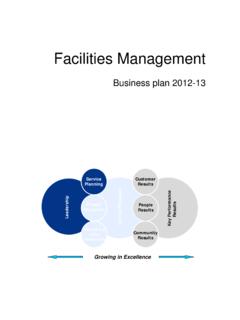Transcription of Paris, 3-4 June 2015 OECD WEEK 2015
1 OECD WEEK2015 Meeting of the OECD Councilat Ministerial LevelParis, 3-4 june Paris2, rue Andr -Pascal, 75775 paris Cedex 16 Tel.: +33 (0) 1 45 24 82 00 ALIGNING POLICIES FOR THE TRANSITION TO A LOW-CARBON ECONOMY Aligning Policies for the Transition to a Low-Carbon Economy 2 EXECUTIVE SUMMARY 1. Addressing climate change is a transformative agenda that requires policy action now. More countries are curbing emissions through the implementation of core climate policies: carbon pricing and market-based instruments, regulatory intervention and targeted support to innovation in low-carbon sustainable technologies.
2 But global greenhouse gas emissions have risen rapidly and remain higher than required to avoid severe and irreversible climate change impacts. 2. This report offers a new approach to facilitate the implementation and improve the effectiveness of climate action, with the first broad diagnosis of misalignments between overall policy and regulatory frameworks and climate goals. It identifies a number of opportunities for realigning policies to enable an efficient and cost-effective shift to a low-carbon economy. As countries move towards finalising their contributions for the 21st Session of the Conference of the Parties to the United Nations Framework Convention on Climate Change (COP21), identifying and addressing key misalignments in each country could help governments be more ambitious, while also achieving other political and economic goals.
3 3. Coal, oil and natural gas have fuelled global economic development for centuries, with the result of persistent and large-scale effects on economic and infrastructure choices. Policy frameworks and economic interests thus continue to be geared towards fossil fuels and carbon-intensive activities. Misalignments also arise from policies that were formulated without taking into account possible effects on greenhouse gas emissions ( the tax treatment of company cars or new regulations on the financial sector). A better understanding of these policies inadvertent impact on greenhouse gas emissions can guide policy-making towards more effective action.
4 4. Aligning policies for a low-carbon economy can contribute to a broader reform agenda for greener, more resilient and inclusive growth. Beyond avoiding the severe and irreversible impacts of a more volatile global climate, reducing CO2 emissions through energy efficiency can increase competitiveness while improving energy security. Low-carbon transport and energy systems result in cleaner air, better health, and a more diversified energy supply. 5. At the 2014 OECD Ministerial Council Meeting (MCM), ministers invited the OECD to work with the International Energy Agency (IEA), the Nuclear Energy Agency (NEA) and the International Transport Forum (ITF) to continue to support the UNFCCC negotiations and to examine how to better align policies across different areas for a successful economic transition of all countries to sustainable low-carbon and climate-resilient economies and report to the 2015 OECD Ministerial Council Meeting.
5 This report presents the four organisations initial diagnosis on where and how existing policy and regulatory frameworks may be misaligned with a low-carbon economy. It shows where better alignments can be found by exploring the key sectors and policy frameworks essential for low-carbon growth. The main findings are summarised below. 3 Policy alignment for a better climate and better growth 6. Scaling up sustainable1 low-carbon investment and finance. There is an urgent and unprecedented opportunity to ensure that new investment in infrastructure supports the climate agenda while fostering economic development.
6 The additional short-term costs of shifting to low carbon would amount to just a fraction of the finance needed for infrastructure overall. There is no shortage of capital, but new sources of financing need to be mobilised. Financial stability is a prerequisite to any kind of investment, including low-carbon. However, it is important to understand and evaluate the potential unintended impact of financial sector rules (accounting, prudential, market) on the supply of long-term finance. Public finance and investment can also catalyse the low-carbon transition.
7 Governments need to reconsider their support for investments in greenhouse gas-intensive activities and mainstream climate objectives into public procurement and official development assistance. 7. Taxation: looking at energy and beyond. Subsidies and tax expenditures favouring the production and use of fossil fuels slow down low-carbon innovation; however, current low oil prices also present an opportunity for reform. Other taxes and tax provisions deserve a closer look ( property taxes, various corporate income tax provisions), as they may encourage carbon-intensive choices.
8 For example, the tax treatment of company cars encourages more CO2 emissions across OECD countries. Governments also need to anticipate the impact of the low-carbon transition on tax revenues. 8. Low-carbon innovation on a large scale. Clear and credible government commitment to ambitious core climate policy instruments is an important spur for low-carbon innovation. The low-carbon transition could and in some cases already is driving a boom in innovation and emerging businesses, and a parallel shifts in skills and the labour force. Innovation for the low-carbon transition is about the creation of new businesses, the restructuring or the phasing out of old ones, the emergence of nascent technologies and business models and the right support frameworks for innovations to be widely adopted.
9 This includes addressing potential skills gaps through education, training and labour market policies. 9. International trade and the low-carbon transition. The international trade regime itself does not prevent governments from pursuing ambitious climate policies, but some international trade barriers can undermine climate objectives. For example, import tariffs still penalise trade in some technologies needed for the low-carbon transition. An Environmental Goods Agreement, currently under negotiation, would help to reduce the costs of climate mitigation efforts, among other outcomes.
10 Care needs to be taken by the many countries that are promoting greener growth by favouring domestic manufacturers of low-carbon technologies. Where these measures restrict international trade, they may well undermine overall investment and the uptake of sustainable technologies. 10. De-carbonising electricity. Electricity lies at the heart of a successful decarbonisation of energy systems. However, deregulated electricity markets do not deliver the long-term price signal needed for investment in high capital-cost, low-carbon technologies.















